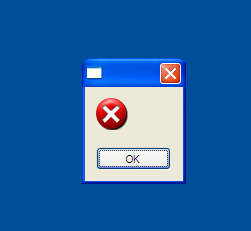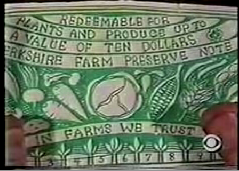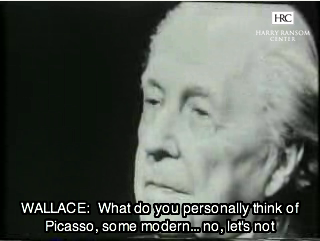This is what I’ve been recently getting when starting my Windows XP partition with Parallel on Mac OS X and after successfully logging.

This is what I’ve been recently getting when starting my Windows XP partition with Parallel on Mac OS X and after successfully logging.

The Brazilian real (R$) buys only .57 US dollars. On the other hand, I noticed that one R$ buys you approximately the same quantity/quality of food than one USD.
The Bankwatch has a post about a community currency this morning. The benefits described are in line with my earlier post on community currencies. This is the first time I see a community currency-related post on Bankwatch. I expect to see more of these from the specialized press first, and from the general press, as the trust crisis in national paper currencies, especially in the U.S. dollar, develops.
Since my last post on April 1st, I have been adding shorts to my portfolio (SDS, DOG, SKF, SCC, SZK) little by little and liquidating my long stock positions. I sold GOOG at $533 on the 18th and AAPL today at $161 ahead of the earnings. I think the short-term rally we have seen in the recent weeks is coming to an end as investors start to realize the good 1st quarter earnings are not necessary a reflection of things to come. Regarding AAPL specifically, I think that the analyst consensus has moved too quickly to Apple beating by a huge margin the expectation, and most of these expectations are built into the price. This is the only reason to me that can explain why a single downgrade to NEUTRAL by AMR was enough to take more than 4% in one day off the recent high reached yesterday. Everyone is expecting a big profit jump and any piece of bad news may have a huge impact. I’m expecting good results but a conservative view of the rest of the year, i.e. Apple will say that they are not recession-proof, which is precisely what I believe is priced in right now. In other words, I think the risk of going down (to $140/$130) is much higher than the chance of going up ($170/$180) tomorrow. Depending on what I read, I may decide to re-establish my long position in AAPL, but for now, the dowside risk is too high.
I share MacroMan thesis of long large caps, short mid caps, to the extent that large caps are typically those making a lion’s share of their money outside the U.S., and I am planning to adjust my mix of shorts accordingly. I’m also looking into buying a Brazilian stock ETF to bet on the continued growth, leverage of the commodity boom, and overall decline of the dollar. I will try to buy in the lower $80 of EWZ if the end of the short-term U.S. rally takes with it EWZ.
I’ve also restored a position in IAU (Gold) and FXY (Yen) as the dollar fall seems to never end and I’m starting to lose completely my naivety, and starting to accept that the Fed or Teasury or any other Bank in the world is just completely powerless against what I can just describe as a growing global belief that the U.S. has lost its shine, and it will take long, very long, or an industrial miracle, before it wins it back, if it ever does.
I am now ~22% shorts, 13% cash (Yen), 47% Cash (USD), and 18% Gold. My portfolio is overall +8.11% YTD in USD and before taxes, -0.45% YTD in EUR. Pretty sad…
Did you know that it is entirely legal to print your own money in the U.S., as long as it does not resemble the U.S. dollar bill?I recently learned about this little know fact. Many communities in the U.S. and many in the world have their own local currency that complements the dollar: Ithaca hours, BayBucks, Deli Dollars are several of the most well-known. The stories behind each of these currencies are fascinating and inspiring, as it reminds us of what each bill money truly is: a unit of a trusted social contract.
During the late 80s, Taft Farms couldn’t raise money from banks to go through the winter. To solve their cash issues, they issued their own money, notes worth 10 US dollars on which you could read “In Farms we Trust” with a cabbage in place of Lincoln. People would buy for $9 in the fall and that would give them the ability to buy $10 worth of produce in the spring. As you can hear from the owner himself in this archived video, the scheme worked because customers fundamentally trusted that these notes would have value in the spring, because they knew they would enable to farm to survive the winter.The Taft Farms note was simply a unit of that trusted social contract and as such had a much higher value than 9 US dollar note. Nine U.S. dollars in autumn gets you ten U.S. dollars worth of produce in the spring.

Depending on how you look at it, that’s a 11.11% interest rate over 6 months (23.45% annualized, which is a very good deal, even if you assume 5% yearly inflation rate of prices in U.S. dollars), or a 10% rebate.Fast forward almost 20 years later with this NetBanker post that describes the value of the social contract in the context of Prosper.com’s peer-to-peer lending community:
Prosper has found that people who receive at least one bid from friends or family have significantly lower default rates than those who only borrow from strangers. By leveraging this social capital, the entire community acts more honestly, even if lending to friends and family is a small part of the overall equation.
In other words, money lent in this way, has more value, then say a zero downpayment, brokered, securitized, and sliced package of hundreds of thousands of loans made to poor credit, zero downpayment buyers of houses in the booming housing market of the 2000s. No one who hasn’t been living under the rock for the last year should be surprised of that. Now, some of you may be surprised to learn that the money bank lend us is very different than the money that you may lend on Prosper.com: most of the money lent by banks does not exist, and they create it from thin air. As John Kenneth Galbraith puts it:
The process by which banks create money is so simple that the mind is repelled.
I encourage you to read JKK’s fascinating book on the history of money Money: Whence it came, where it went, but to keep things simple, bank lend more than they actually have in deposits at the central bank, while charging an interest on all the money they lend. This is known as fractional reserve banking and this is how most of the money is created and why the interest rate set by the Fed is so important. In comparison, Prosper.com and other peer-to-peer lending communities can be seen as a 100% reserve banking system. Like Taft Farms, bank take promises to pay (i.e. provide value) in the future, and exchange it for promises to pay now and charge an interest for it. While Taft Farms did it in the form a currency that can be redeemed for vegetables, banks do it in the form of currency that is legal tender nationwide. Why would the bank not lend Taft Farms money at this rate? because that money is not a reflection of the trusted social contract between the farm and its customers, but simply between the farm and the bank.
Banks are useful simply because they have a given right to issue contracts that become legal tender. Which leads to my guess: in difficult times and declining trust, community money, and community currencies have very likely a much higher value than national currencies like the the dollar, because they are based on a very tangible social contract that minimizes moral hazard.
Here is what you get when you try to connect to the iTunes Store in Brazil:

I discovered this while trying momentarily to authorize one of my friend’s computers to read a movie I had purchased on my computer.
Well, I researched the problem and found this petition. It looks like iTunes Store is not available in Brazil, my guess is for fears of piracy, but I’m not sure. The problem is that the use case above is perfectly legit, yet, impossible to support in Brazil.
Bicycling is probably the best way to discover the city of Rio (except maybe for some touristic sites like Pão de Azúcar and Corcovado) and the worst way around in São Paulo.
In Rio, you can get a working bicicletta for a full day delivered/picked up at/from your hotel for 45 reals. Don’t expect a fancy bicycle, and do not worry when they adjust the brake before handing it to you. Rio has 132.5 kilometers of cycle paths running from downtown to the South Zone and Barra de Tijuca. On Sundays, one of the two-way lanes in front of Copacabana and Ipanema beaches are closed to car traffic and that gives ample spaces for cyclists and runners and strollers to enjoy the views. You can go as I did from Capacabana to the Jardim Botânico via Ipanema on decicated bicycle paths with occasional street crossing (I recommend stepping down). Here is the complete route on veloroutes.org. According to veloroutes, it’s 6.4 mi one way, with a maximum of 455.9 ft elevation. Note that you won’t be able to take your bike in the park, but you can leave it within the park at the level of the main entrance.
In Rio, you even have free bicycle road service from SulAmericá S.O.S. Bike service. The mecanos on bike are able to perform free services such as brake tuning, stem tuning, tire inflating, etc. for free!
Bicycling in São Paulo on the other hand is like going through the amazonian forest, alternating between pseudo-bicycle paths “dirt roads” and the actual urban jungle. There is no comparison with the luxury we enjoy in the U.S. Here cars are queens and have priority over people walking by foot or bicycling.
I went to work last Monday by bicycle with a colleague of mine. I never really felt like I was in danger, but it was quite an adventure. I don’t know if I will do it again. Here is the return route we took on our way back, as tracked by my colleague’s GPS.
Boing Boing just posted a link to a series of archived videos of the “The Mike Wallace Interview”. There is an interview with FLW in there, which I watched this morning.

FLW talks about his view on religion, politics and architecture. FLW is a strong believer in nature, or to try to put it more precisely in the belief that the natural should be the prime guide behind the artificial or man-made. This concept influences his architectural views, but also his religious and political views.
His notion of organic architecture, an architecture that draws its inspiration from its surroundings is well known and almost not mentioned in the interview. The architecture-related points focus on how the architecture of where we live influences our human nature, and how he would like to spend the next 15 years of his life (he was in his late eighties at the time of the interview) changing this country (the US) by changing where we live. This reminded me of this TED talk by James Howard Kunstler on the tragedy of American suburbia and how the US have a dramatic need to change its architecture. It also reminded me of this article Is Your Pleasant Suburb The Next Slum? on the possibility that American suburbia is becoming the new ghetto as prices dwindle there and people are willing to comprise space for convenience, car-free lifestyle and community.
On religion, he talks about “Nature with a capital N” as his Church, his rejection of organized religion, and how this independence has ironically allowed him to do his job as an architect for a number of Churches
The most interesting part to me is his views on politics. FLW seems to be a strong proponent of the Jeffersonian natural aristrocracy, one that is acquired via talents and virtues (as opposed to artificial aristocracy, which is acquired by birth/wealth). Unlike Jefferson, FLW does not provide a way for the natural aristocracy to be separated from the artificial aristocracy, for the wheat to be separated from the chaff. Jefferson believed in leaving to people this task, but I doubt from what I have heard in the interview that FLW believed that. He qualifies people as an incult mob with no taste and no awareness.
Anyway, this video is quite an interesting watch, and filled with quotes such as:
Arrogance is something a man possesses on the surface to defend the fact that he hasn’t got the thing that he pretends to have. He’s a bluff in other words.
Today’s rally was probably a combination of bad news not as bad as usual, and the beginning of the new quarter. The day after my last portfolio update, gold continued to decline abruptly and seeing the cracks in the bull market, I used a small Gold rally I saw as temporary to liquidate my IAU positions with a small profit on Wednesday 26. I am happy I did (I should have sticked to my initial thought that the commodity bull market is taking a deep breath). I did the same with my FXY at a small loss. I have been since then ~20% stocks (mostly AAPL and GOOG) and 80% cash USD, expecting both a short-term rally in the USD and also a short-term rally in equities, explained by market participants thinking that the worst is over, or that the Wall Street crisis won’t affect Main Street as much as priced in.AAPL did well the last month and a half (+20% since the mid-February low) and I am happy to have held on. I entered at around $135 and I’m now well in the red (+10%). This is partly thanks to the general recent market enthousiasm and partly thanks to the rumors around the 3G iPhone and of price reductions of the current model. I think the latter will be a great move. I don’t understand why Apple hasn’t been democratizing its offering with entry products that more people can afford, especially at the time we are now clearly entering a slow down. I think a sub $300 iPhone will allow people with a lower budget than current owners to finally get what they wanted for more than a year. BTW, did you know that Brazil taxes 100% imported electronics, making the MacBook Pro a >R$ 10K-12K luxury almost nobody can afford.Anyway, I’m still bearish for U.S. equities for the rest of the year, but I know that bear markets don’t go in a straight down line, and that we might be experiencing a temporary bull market. As a resuslt, I am going to watch more carefully the action tomorrow and the rest of the week. SKF (ultrashort financials) was down almost 15% today, SDS (ultrashort S&P500) was down more than 7%, which tells me that it might soon be time to buy shorts again. My portfolio is up 6.5% YTD in USD, and -0.6% in EUR.
Will American highly-qualified workers soon have no other option but to get a job at companies from the very countries they were calling third-world not so long ago?